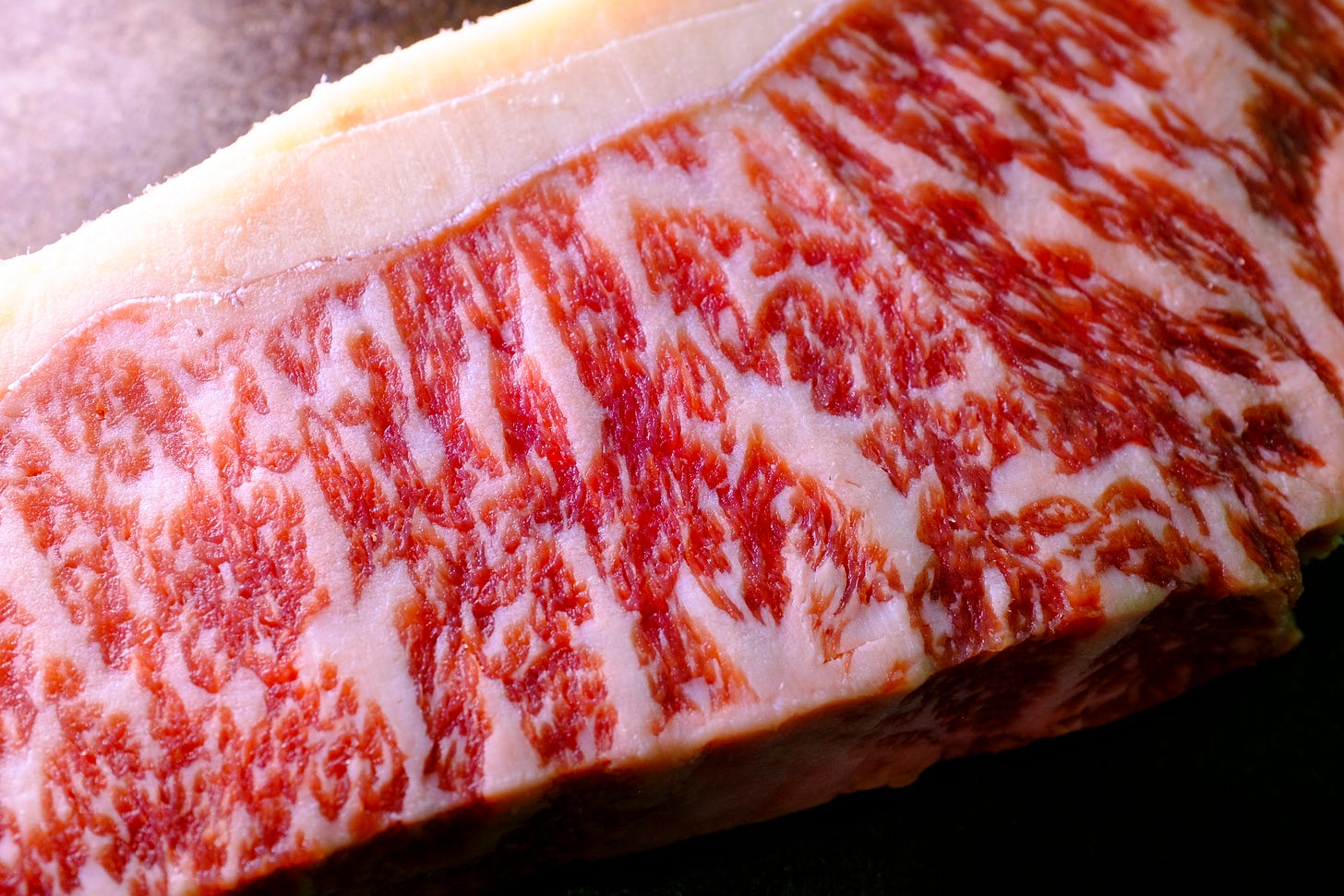Japan’s Wagyu is a symbol of indulgence, with marbled textures and melt-in-the-mouth flavors that command some of the highest prices in the culinary world. Yet even within Japan’s Wagyu tradition, three names stand out – Kobe, Matsusaka, and Miyazaki. Each hails from a different region, each has a distinct reputation, and each carries its own market value.
Kobe Beef
Kobe beef originates from the Hyōgo Prefecture and must come from purebred Tajima-gyu cattle, a line of Japanese Black Wagyu. Strict rules govern what qualifies as “Kobe”. The cattle must be born, raised, and slaughtered in Hyōgo, and only steers (castrated males) or virgin heifers are eligible. Because of this limited geography and controlled lineage, Kobe is not just a brand but a certification.
Matsusaka Beef
Matsusaka beef is raised in Mie Prefecture, primarily from female cattle that have never calved. Unlike Kobe, where steers dominate, Matsusaka is known for its pampered virgin cows. Farmers are famed for their meticulous care, feeding blends of rice straw, barley, and occasionally beer, while brushing the animals to improve circulation. This regimen contributes to ultra-fine marbling and tenderness, cementing Matsusaka’s reputation among Japanese gourmands as perhaps the most luxurious Wagyu.
Miyazaki Beef
Miyazaki beef comes from Miyazaki Prefecture in Kyushu and has risen in prominence more recently than Kobe or Matsusaka. While Kobe leans on centuries of tradition, Miyazaki has built its reputation on excellence in cattle breeding and feeding programs. Miyazaki beef consistently wins national Wagyu competitions, including the coveted Prime Minister’s Award, and is now considered the strongest rival to Kobe in global markets.
Grading Standards
All three Wagyu types follow Japan’s national grading system established by the Japan Meat Grading Association (JMGA). Beef is graded on two key axes:
-
Yield Grade (A, B, C): A measures carcass yield relative to weight, with A being the highest.
-
Meat Quality Grade (1–5): Evaluates marbling, meat color, brightness, firmness, and fat quality.
-
Within this, the Beef Marbling Score (BMS), ranging from 1 to 12, further defines quality.
-
Kobe Beef: Only carcasses graded A4 or A5 with a BMS of 6 or above qualify as Kobe. This sets an extremely high entry bar, which explains why less than 3,000 heads per year receive Kobe certification.
-
Matsusaka Beef: Typically graded at the highest levels, with many examples exceeding BMS 10–12. Matsusaka holds its own branded grading competitions, and “Matsusaka Grand Champion” carcasses often fetch record prices.
-
Miyazaki Beef: Consistently achieves A5 grading and has built a reputation as the most reliable in maintaining top scores across large production volumes. Miyazaki beef has won consecutive titles at Japan’s Wagyu Olympics, a feat unmatched by any other region.
Flavor and Texture Differences
-
Kobe: Famous for balance
-
Matsusaka: Known for extreme marbling
-
Miyazaki: Richly marbled with firmer texture
A Hard Choice
All of these three Wagyu types sit at the summit of Wagyu culture, but they each tell a different story. For diners, the choice often comes down to budget, and whether they seek the prestige of Kobe, the richness of Matsusaka, or the balance of Miyazaki.
Image Credit: https://www.vecteezy.com/free-photos/japanese-wagyu
_ _ _
© CHURRASCO PHUKET STEAKHOUSE / ALL RIGHTS RESERVED
Reprinting, reposting & sharing allowed, in exchange for a backlink and credits
Churrasco Phuket Steakhouse serves affordable Wagyu and Black Angus steaks and burgers. We are open daily from 12noon to 11pm at Jungceylon Shopping Center in Patong / Phuket.
We are family-friendly and offer free parking and Wi-Fi for guests. See our menus, reserve your table, find our location, and check all guest reviews here:
https://ChurrascoPhuket.com/
#Churrascophuket #jungceylon #phuketsteakhouse #affordablewagyu #wagyu


This is a great resource. Thank you for sharing.